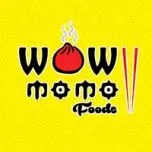Summary
The global low-cost fast food franchise sector represents the most accessible entry point into quick-service restaurants, with investment ranging from $10,000 to $350,000 depending on format. These affordable fast food franchises drive industry growth, attracting first-time entrepreneurs through proven systems, brand recognition, streamlined operations. Low cost fast food franchises scale globally with simplified menus (fewer SKUs reduce training time and waste), standardized workflows, mobile POS, flexible formats (kiosks, food trucks, ghost kitchens, inline counters). Regional differences: rent, wages, electricity tariffs, delivery commissions, regulatory costs.
Regional costs
United States. Retail space $24–25 per sq ft/year, high-traffic 2–3× higher. Crew $14–16/hour. Power 9–12¢/kWh to 20–30+¢/kWh. Cheapest fast food franchises: Chester's Chicken $27,000–$302,000, Java Dave's Coffee $20,000–$100,000, Kona Ice $80,000–$150,000, Taco Bell Express $175,000–$300,000.
Canada. Prime locations price above the U.S. once converted. Wages align, utilities predictable.
Europe/UK. High streets cost several times the U.S. rent per square meter. Stricter labor, social charges, 15–30% delivery commissions.
Gulf/Middle East. Mall rents premium plus service charges. Staff wages are lower but housing/visa costs offset.
Asia-Pacific. China, Southeast Asia, India, Africa drive fastest growth through urbanization, young demographics, delivery penetration. Ghost kitchens thrive in dense urban centers.
Investment and Fees
| Format / Model | Initial investment | Franchise fee | Ongoing fees |
|---|---|---|---|
| Kiosk / counter service | $27,000 – $350,000 | $3,500 – $30,000 | 4–6% / 1–2% |
| Food truck / mobile unit | $80,000 – $275,000 | $15,000 – $30,000 | 4–6% / 1–2% |
| Inline quick-service | $120,000 – $650,000 | $20,000 – $45,000 | 5–6% / 2–5% |
| Fast food franchise under $50k | $10,000 – $50,000 | $3,500 – $30,000 | 4–6% / 0–2% |
| Delivery-first / ghost kitchen | $80,000 – $250,000 | $10,000 – $25,000 | 4–6% / 0–2% |
Includes fit-out, equipment (fryers, refrigeration, prep tables), POS, signage, inventory, training, permits, working capital.
Costs
Startup: improvements, equipment (fryers, griddles, refrigeration), POS, signage, inventory, training, permits, working capital. Food trucks face additional $28,000–$30,000 for permits/licenses.
Ongoing: royalty 4–6%, marketing 1–5%, labor ($14–16/hour North America, comparable Canada, higher Europe, lower Asia/Gulf with added costs), food cost (ideally 28–32%), rent, utilities, packaging, delivery 15–30%. Average ticket $8–12; units protect margin through high-margin add-ons (beverages, fries, desserts), upsized combos, efficient workflows, tight inventory management.
Formats
- Kiosk/counter service. Compact for malls, airports, campuses; low rent, minimal staff, quick tickets. Best low cost fast food franchises for high-traffic venues.
- Food truck/mobile unit. Brings food to events; startup averages $100,000 including vehicle, equipment, branding, permits. Ideal inexpensive fast food franchise for flexibility.
- Inline quick-service. Mid-size with counter service and 10–20 seats; balances dine-in with takeout. Good budget friendly fast food franchise option.
- Fast food franchise under $50k. Ultra-low-cost concepts in convenience stores, truck stops, express counters; includes Chester's Chicken and other affordable food franchises.
- Delivery-first/ghost kitchen. Lowest capex, shared commissaries; best for expensive city centers. Perfect cheap fast food franchise for delivery-focused markets.
Requirements
Franchisors require liquid capital $25,000–$200,000, ability to hire and train crew, readiness for portion control and food safety, flexibility for peak-hour demand. Successful low investment fast food franchise operators manage tight inventory cycles, monitor labor scheduling, drive sales through local marketing, social media, and loyalty programs.
International operators need due diligence on rent (with service charges), electricity tariffs, delivery contracts, local import costs — these determine profitability.
Cost drivers
Key drivers: location type (kiosk rent in U.S. malls $50–80 per sq ft annually, European high streets and Gulf malls 2–3× higher), labor rates ($14–16/hour North America, higher Europe), food cost percentage (ideally 28–32%), packaging for takeout. High-margin items — beverages, fries, desserts — drive profitability; simplified menus reduce prep time and waste.
Average payback for low cost food franchises ranges 18–36 months, faster than full-service due to lower capex and lean operations. Operators improve margins by optimizing menu mix, reducing ticket time to under 5 minutes, leveraging online ordering, and adapting to local tastes.
How to choose
- Format: Kiosks for captive high-traffic, inline shops for street traffic, food trucks for events, delivery-first for expensive city centers.
- Investment range: Compare total startup costs to available capital; options range from under $50k to $350k.
- Menu complexity: Simpler menus reduce training time, inventory cost, waste.
- Real estate: Price with local rent; check service charges or CAM fees.
- Training: Comprehensive training, operational support, marketing resources?
- Delivery strategy: Verify packaging protects food quality and platform commissions don't erase profitability.
- Profit margins: Review item-level margins and average check to validate ROI timelines.
The most affordable fast food franchises attract first-time entrepreneurs with scalable models, proven systems, and strong brands. Technology integration — AI-driven customer interactions, automated finances, online ordering — supports even the cheapest fast food franchises. Strategic partnerships with delivery aggregators, fuel stations, and college campuses facilitate rapid expansion. Whether exploring the most affordable food franchises under $50k or mid-tier concepts under $350k, fundamentals remain consistent: control food cost, optimize labor, choose high-traffic locations, deliver consistent quality across all regions.




















